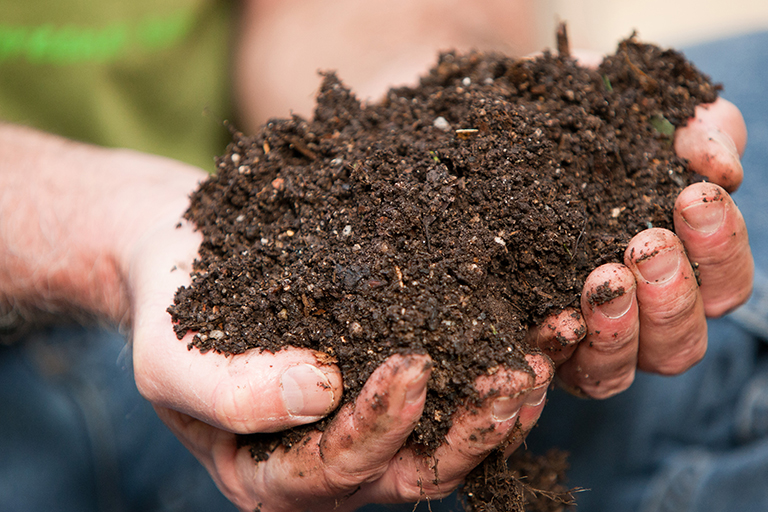By Pamela A. Keene
Stop: Save those potato peelings and other kitchen scraps. Instead use them to create the best and least-expensive garden compost simply by following the right techniques and using the right combination of ingredients.
“The secret to successful gardening is the quality of the soil you plant in, and when you amend your soil with compost, you’re improving your chances for a more productive garden,” says Joe Lamp’l, founder of joegardener.com and the television program “Growing a Greener World” (broadcast on PBS and on the internet at www.growingagreenerworld.com/episodes or through
podcasts at joegardner.com).
Without getting too technical, compost is made from biodegraded organic matter. In the right proportions and conditions, bacteria, fungi, protozoa, earthworms and arthropods (such as beetles and springtails) break down the materials. There are four basic ingredients to make compost: carbon (brown waste), nitrogen (green waste), air and water.
“You don’t need any fancy equipment or tools to start a compost heap,” Lamp’l says. “Just select an out-of-the-way spot — behind some shrubs or a far corner of your yard — and you can just begin putting the ingredients into a pile. Find an easy-to-access place with water nearby and you’re all set.
“Start with woody materials, branches or sticks that will aid in ventilation, then layer brown, then green materials, using a formula of roughly two-thirds brown and one-third green,” he says.
Examples of green materials, which have a higher nitrogen content, include fresh grass clippings, pulled weeds and nonmeat, nonfat kitchen scraps, such as vegetable and fruit peelings and cores, coffee grounds and used tea leaves. Brown ingredients include dried leaves, shredded cardboard or paper, small wood chips and dried grass clippings. You can add a shovelful of garden soil or a handful of fertilizer, such as 10-10-10 or Milorganite slow-acting fertilizer, to speed up the process a bit.
A garden thermometer is a good investment for helping you maintain the temperature at around 130 degrees. You should periodically spray the pile with a garden hose to keep it moist; be careful not to overwater. The moisture consistency of a damp sponge is a good gauge.
Composting can take two months to a year or more, depending on the ratio of brown to green ingredients, how often the pile is turned or aerated, how much heat is generated during the process, the size of the pile and other conditions. Once it is ready, add it to your garden soil and increase the nutrients and improve your soil’s texture.
Journalist Pamela A. Keene is a photographer and an avid lifelong gardener.

